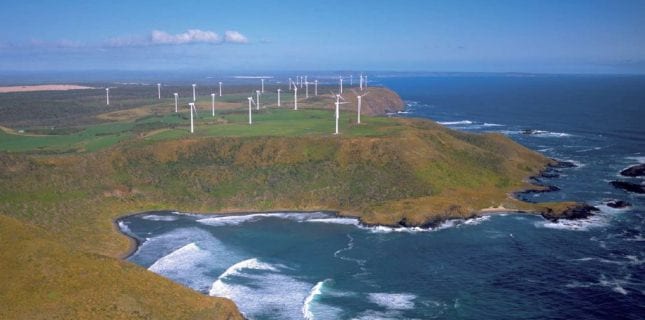A new scientific report released by Australia’s National Health and Medical Research Council (NHMRC) has found no direct link between exposure to wind farm noise and damage to human health, but has recommended more scientific research could be done into the complex community-led issue, which was based on “no strong hypothesis”.
The findings of the report, Evidence on Wind Farms and Human Health, were released on Wednesday along with a statement from the NHRMC saying that, based on their research, there was currently no credible evidence that exposure to wind farms directly affected a person’s physical or mental health.

“After careful consideration and deliberation of the body of evidence, NHMRC concludes that there is currently no consistent evidence that wind farms cause adverse health effects in humans,” the statement said.
And while there was, it conceded, “some consistent but poor quality direct evidence” that wind farm noise was associated with annoyance, there was “less consistent, poor quality direct evidence of an association between sleep disturbance, stress disorders or hearing disorders, and wind farm noise.
The report is based on a rigorous assessment of the available scientific evidence on wind farms and human health, much of which the report’s authors said was of “very poor quality.”
Emeritus Professor Bruce Armstrong – chair of the NHMRC Wind Farms and Human Health Reference Group and a Professor of Public Health at the University of Sydney – said that of the 4000 pieces of research examined, the vast majority was opinion and editorial material, with only 13 pieces of original research – “and they’re not very good.”
“It is unfortunate that most of the studies were of poor quality,” Armstrong told journalists in a briefing on the report. “None of them were good quality studies, on which we could rely.
“We do know that long continued annoyance can lead to stress and stress has been associated to such things as heart disorders, so there’s a possible indirect connection there. But ultimately, it’s very uncertain whether its a cause and effect relationship.”
Given the poor quality of this evidence, and continued concern expressed by some members of the community, the NHMRC said it supported further high quality, independent scientific research in the area.
But NHMRC CEO Professor Warwick Anderson stressed it would have to be high quality research and be peer reviewed. “We want to spend any research money wisely,” he said.
Interestingly, however, Armstrong stressed that research into effects on people living further than 1500 metres was unwarranted, as there was “absolutely no suggestion of health effects from wind turbine noise at beyond 1500 meters.”
The report also urged authorities with responsibility for regulating wind farms to “undertake appropriate planning, in consultation with communities, and be cognisant of evidence emerging from research.”








